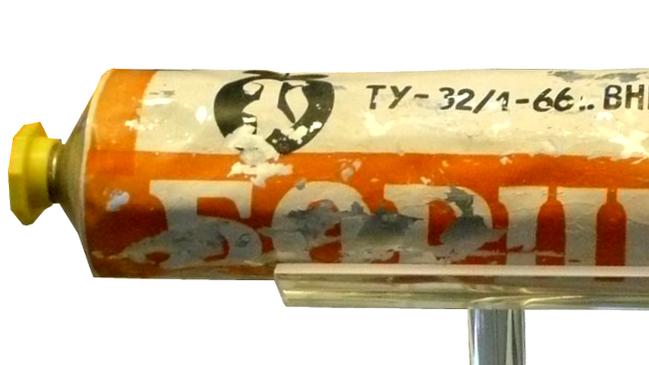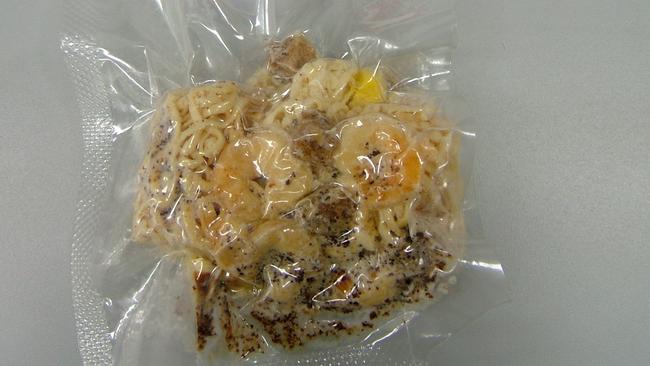How this lettuce may unlock the future of space travel
THESE are not just crunchy leaves. They represent the first step towards self-sufficient spacecrafts and the beginning of a new era of space engineering and exploration.

LETTUCE is not usually considered a delicacy — especially not one that would cost millions of dollars.
That is, unless it’s grown and eaten in space. Last week, three NASA astronauts became the first to sample the multimillion-dollar lettuce heads.
This was their reaction.
It was one small bite for man, one giant leap for #NASAVEGGIE and our #JourneytoMars. #YearInSpace https://t.co/B7Gkfm1Vz0
— Scott Kelly (@StationCDRKelly) August 10, 2015While they may look like ordinary red romaine lettuce heads, according to Dr Xiaofeng Wu, Lecturer at the School of Aerospace, Mechanical and Mechatronic Engineering at the University of Sydney, these crunchy leaves may be what unlocks the future of space travel.
He explains, “International Space Station depends exclusively on mother Earth to supply food to its crew members, which could be a risk to the lives of the astronauts.”
“The space-grown lettuce is the first step towards self-sufficient manned spacecrafts. This also provides feasibility for future manned space explorations, like mars missions.
“This makes it possible for human beings to have fresh food for space travel and space colonisation.”
While the International Space Station (ISS) is stocked with at least six-months worth of food, restocking supplies is costly and not always successful.
Sending one pound (450g) of food from Earth to space costs about $10,000. And with each astronaut requiring 3.8 pounds of food — per day — on missions that can last up to 355 days, the bill for space food can quickly escalate.
More so when the supplies don’t make it. This year, the ISS missed two supply deliveries due to launch mishaps. The US SpaceX blew up minutes after launch and the Russian Soyuz rocket lost control and fell back to earth.
While the Space Station is always well-stocked, there are some products that can’t be stored over long periods — fresh fruit and vegetables being one of them.
That’s not to say astronauts are want for variety. There are more than 300 dishes available on the ISS. They include chopped pork with eggs, beef with vegetables, split pea soup, pike perch in Baltika sauce, tofu with Hoisin sauce to African sweet potato and peanut soup and lasagne.
The South Koreans even spent millions to make sure their first ever astronaut Ko San, a 30-year-old computer scientist who beat 36,000 contestants to win a trip to space, did not leave Earth without kimchi, a national delicacy.
But while space food has become more diverse from its heyday of toothpaste-tubed chocolate source and pureed meat, it still has a long way to go. Most dishes on the ISS rely on thermostabilised or rehydratable foods. In laymen’s terms, food you can either reheat or add water to. When fruit and vegetables do arrive, they are limited quantity and have to be eaten quickly.

Hence, the excitement over “Outredgeous” red lettuce. The success of Veg-01, nicknamed Veggie, means spacecrafts are one step closer to self-sufficiency, a requisite for deep space exploration.
But growing food in space is not without its challenges. As Dr Wu explains: “Space presents a unique hostile environment to grow vegetables, including microgravity, radiation, lighting and so on ... Heavy radiation may modify the vegetables’ genes and my affect the human health.”
It’s a challenge NASA is willing to accept — not only to become more sustainable but also for its potential psychological benefits. According to Gioia Massa, NASA project scientist for Veggie, growing vegetables and fruit can have a positive effect on an astronaut´s mental well-being.

For long space voyages, where crew are confined to small spaces, a garden is a reminder of Earth and also a way to build group bonds.
Earthlings too can learn from the NASA Veggie project. The technology used to grow the lettuce can also be applied to urban plant factories and farms. The NASA Veggie system, developed by Orbital Technologies, cultivated the lettuce aeroponically — without soil, in an air or mist environment. This method uses less water, less fertiliser and does not require pesticide, potentially improving agricultural production in resource-scarce and industrial areas.
For now though, the lettuce heads (those that weren’t eaten) are making the long journey to Earth. Where they will take the future of space travel from here still remains to be seen.
Dr Wu, for one is confident, that this is just the beginning of a new era of space engineering and exploration.
He concludes: “We are not far away from building self-sufficient spacecrafts. Although space is significantly limited on-board the current spacecrafts, the advanced engineering technologies, like 3D printing, could build gigantic rooms for space farming.”
Almost time for #NASAVEGGIE harvest! Tune in to @NASA TV to follow along: http://t.co/9YO8Grazdx pic.twitter.com/VFpyvLoqOE
— ISS Research (@ISS_Research) August 10, 2015


